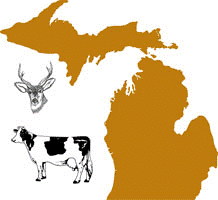Wildlife Disease and Zoonotics
Date of this Version
7-2009
Abstract
Bovine tuberculosis (TB) is a serious disease with animal health, public health, and international trade consequences. The cooperative Federal-State-industry effort to eradicate bovine TB from cattle in the United States has made significant progress since the program’s inception in 1917. However, the goal of eradication remains elusive.
This proposed action plan presents Veterinary Services’ (VS’) current thinking about changes we are considering for the TB program to address our current challenges.
This action plan will:
1. Reduce the introduction of TB into the U.S. national herd from imported animals and wildlife by:
o Applying additional requirements to cattle imports from Mexico
o Enhancing efforts to mitigate risks from wildlife
2. Enhance TB surveillance by:
o Crafting a comprehensive national surveillance plan
o Accelerating diagnostic test development to support surveillance
3. Increase options for managing TB-affected herds by:
o Conducting epidemiological investigations and assessing individual herd risk
o Applying whole-herd depopulation judiciously and developing alternative control strategies
o Applying animal identification (ID) standards to meet animal ID needs
4. Modernize the regulatory framework to allow VS to focus resources where the disease exists
5. Transition the TB program from a State classification system to a science-based zoning approach to address disease risk
To succeed, this new approach will require VS’ continued partnership with State animal health and wildlife officials, other Federal agencies, industry, international partners, academia, and other stakeholders. Successful partnerships will allow us to use available resources efficiently to achieve program objectives and protect our nation’s herd.
Implementation of the VS proposed action plan will benefit Federal and State animal health officials, the regulated industries, and producers by allowing a more rapid response that employs up-to-date science and can adapt rapidly to changing situations.


Comments
Published by United States Department of Agriculture/ Animal and Plant Health Inspection Service/ Veterinary Services.